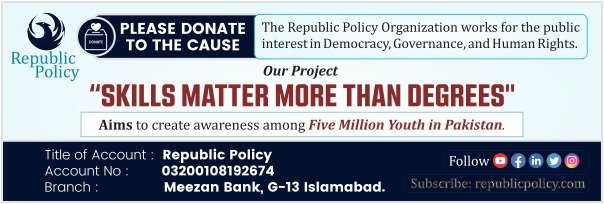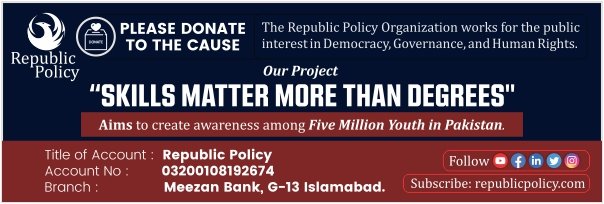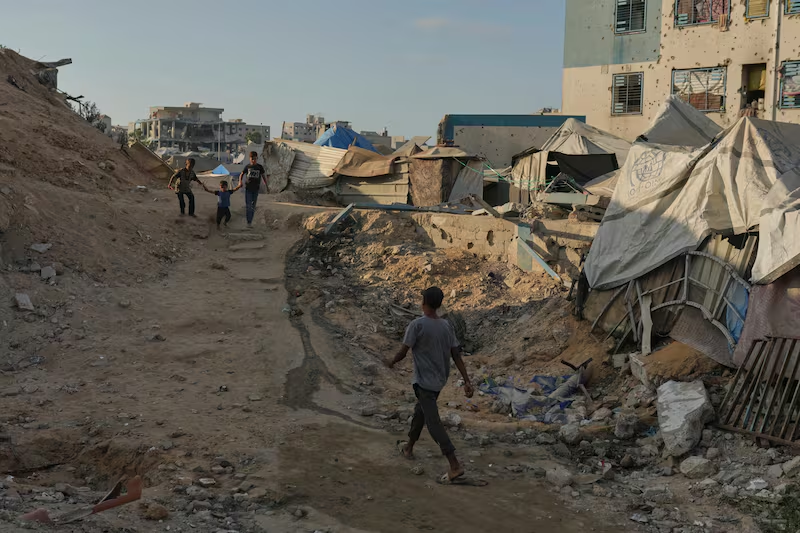Mubashar Nadeem
For the past week, Lahore has been engulfed in a thick blanket of toxic smog. According to the global air monitoring group IQAir, the city has consistently ranked among the world’s most polluted — a grim record it has held for years. Despite the Punjab government’s claims of “emergency measures” and “environmental reforms,” the crisis once again exposes the gap between governance rhetoric and ground reality.
The current wave of smog is not new. It reappears every year between October and February, as low temperatures and wind stagnation trap pollutants close to the ground. Yet, despite the predictability of the crisis, the Environment Protection Department (EPD), led by Minister Maryam Aurangzeb, has failed to demonstrate results. EPA field formations and local administrations issue the same advisories each year — school closures, vehicle checks, and bans on crop burning — but none of these cosmetic actions have addressed the root causes.
Follow Republic Policy on YouTube
At the heart of the problem lies governance failure. Punjab’s environmental crisis is not just an issue of air quality but of institutional incapacity. The EPD and its sub-departments operate with limited data, outdated monitoring systems, and fragmented coordination. Lahore’s air quality monitoring network remains insufficient to provide real-time, district-level readings. Without accurate data, it is impossible to design targeted interventions.
Traffic emissions remain the single largest contributor to Lahore’s smog, yet there has been no coherent transport policy. The city’s public transport system remains underdeveloped, forcing millions onto private vehicles and motorbikes that emit unfiltered pollutants. The government’s occasional road closures and token fines for smoke-emitting vehicles are reactive, not preventive. Instead of modernising transport and regulating industrial zones, Punjab’s environmental management remains focused on press releases and short-lived campaigns.
Cross-border pollution from India is another critical element in this transboundary disaster. During harvest season, widespread stubble burning in Indian Punjab contributes heavily to smog on both sides of the border. Winds carry fine particulate matter — PM2.5 and PM10 — deep into Lahore, Faisalabad, and adjoining regions. However, Pakistani officials have often used this factor as an excuse rather than a reason for regional collaboration. Environmental diplomacy between the two Punjabs remains virtually non-existent, even though joint monitoring and mitigation could offer meaningful relief.
The absence of a comprehensive policy is what makes this crisis perennial. While the Punjab government has created task forces and introduced clean air zones on paper, implementation remains symbolic. Industrial emissions in areas like Sundar, Sheikhupura, and Faisalabad continue unchecked. Brick kilns are ordered to shut down temporarily, only to reopen once the smog season ends. Meanwhile, agricultural waste burning persists due to the lack of affordable alternatives for farmers. Without addressing these structural roots, every “smog emergency” becomes a seasonal spectacle of official statements and public despair.
Follow Republic Policy on Facebook
The role of political leadership also requires scrutiny. Chief Minister Maryam Nawaz has repeatedly vowed to make Lahore “clean and green,” yet the lack of enforcement shows a disconnect between vision and capacity. Her administration’s environmental agenda appears more focused on optics — tree plantation drives and awareness walks — than systemic reform. Effective environmental governance demands regulatory courage: penalising powerful industrial lobbies, reforming urban transport, investing in renewable energy, and empowering local governments to enforce environmental standards.
What Punjab needs most urgently is a comprehensive “Clean Air Framework.” Such a plan should combine technological, regulatory, and community-based solutions. First, the province must invest in modern air quality monitoring systems, integrating satellite data and ground sensors. Second, traffic management reforms — such as emission testing, mass transit expansion, and green vehicle incentives — must be prioritised. Third, crop residue management should be subsidised to discourage stubble burning, while industries should be compelled to install emission filters.
Follow Republic Policy on TikTok
Beyond regulation, public awareness remains critical. Citizens need to understand the health hazards of air pollution and their role in worsening it. The World Health Organization estimates that nearly seven million people die annually due to air pollution-related diseases. In Lahore and Faisalabad, respiratory illnesses, asthma, and eye infections spike every winter. Yet, the government’s response remains limited to advisories, not healthcare preparedness. Hospitals and schools should be part of the city’s smog resilience strategy — not afterthoughts.
The economic cost of Punjab’s smog is also enormous. It disrupts trade, halts construction, slows down industrial output, and damages agriculture. As visibility drops, transport accidents increase. Yet, no government in Pakistan has ever calculated or published the actual financial toll of air pollution. If environmental loss were measured as part of GDP decline, policymakers might finally grasp its severity.
Follow Republic Policy on Instagram
Ultimately, Lahore’s smog is not merely an environmental issue; it is a test of governance. The Punjab government’s inability to manage a recurrent, predictable crisis reveals how weak administrative planning undermines public welfare. The challenge is not scientific but political — requiring commitment, accountability, and data-driven policy. Without decisive reform, Punjab risks suffocating under its own failure, year after year, while its citizens continue to breathe poison in the name of progress.














